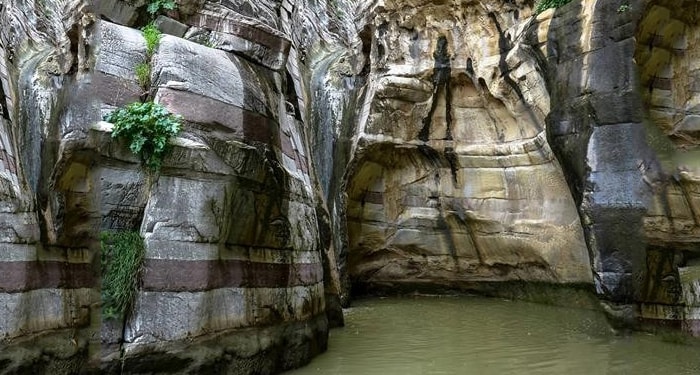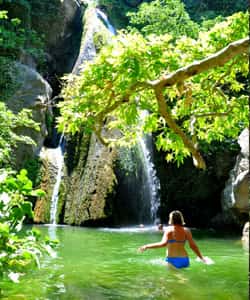A very short gorge with the small wonderful beach of Agriomandra formed at its exit. To find that you should follow the dirt road that crosses the green meadows west of Kavoussi, known as Lakos Ambelion position, till the entrance to the gorge.
Gorge Katsounaki is located in the dry Eastern Crete, east of Xirokambos settlement. The river passing through the gorge leads to the beach of Xerokampos River, next to the beautiful sand beach of Alona. Hiking in the canyon is easy and the landscape with tall walls is very wild. You can walk upside down from Alona.
The gorge of Adrianos starts from the village Adrianos. In some places there are high rocks that impede the free course through the canyon, making walking difficult, but not impossible (the course needs about 3 hours). The river flowing in its bed is Skoulikaris that starts near village Potami and it empties in the town of Agios Nikolaos.
The gorge of Agia Irini by Ziros is actually a set of two parallel canyons that merge shortly before the sea, at the point where the dirt road passes to the beach of Agia Irini. Both canyons are very wild, rocky, with steep slopes and high walls. Especially the westernmost of the two branches is quite eerie and dangerous for those who have no experience of hiking in canyons (still it is not technical).
The gorge of Xerokambos – Ziros, officially called “Lamnoni gorge”, is the driest canyon of eastern Crete. Walking in the gorge takes approximately 2 hours and the descent is quite easy and smooth. The canyon has typical wild cretan beauty, with bare, tall walls and undergrowth. Throughout the journey, you'll admire the view to the blue Libyan Sea.
The exit of the gorge Tsigounis is located 1km west of the village Sfaka, Sitia district, on a turn of the main road connecting central Crete to Sitia. The river flowing through the gorge gets its water from the plateau Monokara and is "stingy" (tsigounis means stingy) as it has small quantities of water only in winter.
The name Havgas and its corruptions (eg Chavgoudi, Ha) is very common in the gorges of East Crete. Thus, one more Cretan gorge named Havgas is located above Plaka, by Elounda. The gorge starts east of Fourni, passes below the village Havgas and exits at Plaka.
The canyon of Koudoumis is located about 27km west of Sitia, near the village Tourloti. The canyon is accessible on foot, but it has six small steep rappels that require little attention. The canyon is also called Tourloti Gorge as its exit is located close to Tourloti and its entrance is located at the small plateau of Monokaras, a few kilometers further south. The impressive rock formations and the blooming nature of spring make trekking in Koudoumis gorge very interesting.
























































































